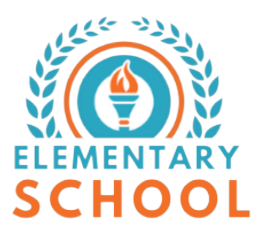By Mr. Fuji, Educator and Founder of Elementary School
In today’s interconnected world, the smartphone has become an essential tool for communication, education, and entertainment for people of all ages, including youth under 18 years old. Yet, the rise in inappropriate content, spam calls, and identity-related issues highlights the urgent need for innovative solutions that protect and empower the youngest members of our society. One bold idea that deserves attention is the creation of dedicated area codes—111, 222, 333, 444, 555, 777, and 999—exclusively for people under the age of 18.
This initiative could revolutionize how we think about phone numbers and identity for youth, while also addressing serious concerns around safety, privacy, and accessibility. Let’s explore why this idea is not just practical but essential.
Why Dedicated Area Codes for Youth?
Safety from Inappropriate Content and Spam Calls
The digital landscape can be a dangerous place for young people. Spam calls, phishing attempts, and inappropriate messages are common problems for phone users of all ages. However, children and teens are particularly vulnerable to these risks due to their limited experience and exposure. By creating a dedicated set of area codes for individuals under 18, telecommunications providers can:
- Implement stricter filters for incoming calls and messages.
- Automatically block known spam numbers and flagged content.
- Enable parents and guardians to monitor activity without compromising privacy.
An Identity System for Youth
A phone number with a youth-specific area code could serve as a unique identifier, helping to streamline processes like:
- Verification for age-appropriate apps and services: Instead of relying on easily bypassed self-reported ages, apps could require a phone number with a youth-specific area code to grant access.
- Education systems: Schools and extracurricular programs could use these numbers to manage communication securely.
- Transitioning to adulthood: When a user turns 18, they could be migrated to a standard area code, preserving their number while ensuring their transition into the adult digital ecosystem is seamless.
Public Awareness and Accountability
Youth-specific area codes would create a strong public signal about the importance of protecting children. By making these codes easily recognizable, parents, teachers, and even businesses can become more aware of how to engage responsibly with young users.
Why These Numbers?
The proposed area codes—111, 222, 333, 444, 555, 777, and 999—are simple, memorable, and easy to identify. These repeating patterns not only make them highly recognizable but also differentiate them from traditional geographic area codes. Here’s why they work:
- Simplicity: Repeating numbers are intuitive and user-friendly, especially for younger children.
- Recognition: These numbers can quickly become associated with youth-focused initiatives, helping to build public awareness.
- Availability: Most of these codes are currently unassigned within the North American Numbering Plan, making them ripe for repurposing.
How It Would Work
- Regulatory Approval: The Federal Communications Commission (FCC) and the North American Numbering Plan Administrator (NANPA) would designate these area codes for youth-specific use.
- Telecommunications Provider Support: Phone carriers would implement these codes and ensure that they are tied to robust safety features, such as spam blocking, parental controls, and content filters.
- Transition and Awareness Campaign: A national rollout plan would include education for parents, youth, schools, and businesses about how these codes function and why they matter.
- Privacy-First Design: Safeguards would ensure that these numbers are not easily exploitable by marketers or other entities. For example, businesses could be required to meet stringent verification standards before contacting these numbers.
The Benefits
- Enhanced Safety: Reduced exposure to harmful content, scams, and unwanted calls.
- Empowered Parents: Parents can trust that their children’s phone numbers are backed by stronger protections.
- Streamlined Access: Simplified processes for verifying age and managing youth-specific services.
- Nationwide Consistency: A universal system that works across all states and territories, ensuring no child is left out.
Addressing Potential Concerns
Cost of Implementation: While there will be initial costs to implement a new numbering system, the long-term benefits of protecting youth and reducing fraud outweigh these expenses.
Exclusivity and Scalability: To prevent misuse, access to these area codes would require proof of age. As the youth population grows, additional numbers can be allocated within the same framework.
Transition to Adulthood: A clear process for transitioning users to standard area codes at age 18 would ensure continuity while maintaining the integrity of the system.
A Bold Step Toward a Safer Future
The creation of dedicated area codes for youth isn’t just a technological upgrade; it’s a societal commitment to safeguarding our children in an increasingly digital world. By implementing area codes like 111, 222, 333, 444, 555, 777, and 999, we can set a global standard for prioritizing the well-being of our youngest citizens while fostering innovation and responsibility in telecommunications.
Our proposed Department of Technology, with its forward-thinking approach and commitment to public benefit, is uniquely positioned to lead this transformative initiative. Let’s take this bold step together. It’s time to protect, empower, and uplift our youth in a way that’s simple, effective, and impactful.
What do you think? Would you support a system like this? Share your thoughts and join the conversation about creating a safer, smarter digital future for our children.
To learn more about our youth area codes initiatives, visit our sister website at www.department.technology
